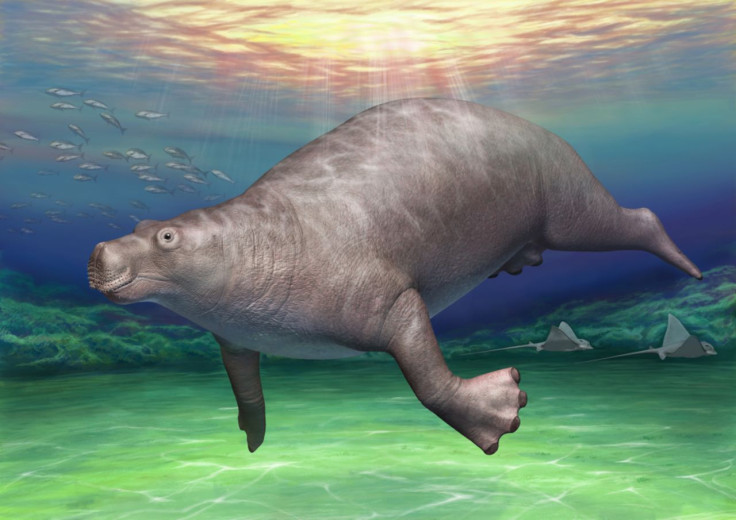Prehistoric Hippo-Like Creature Identified From Long-Forgotten ‘Dinosaur’ Bone

More than 60 years ago, a rare thigh bone was discovered in Japan. Back then, it was thought the fossil belonged to a dinosaur, but just recently, a team of researchers found it actually belonged to an ancient hippo-like creature, one that lived on Earth long after the dinosaurs went extinct.
The femur fossil was discovered all the way back in the 1950s by workers building a dam near the town of Tsuchiyu Onsen in Fukushima, Japan. While the locals didn’t pay much attention to the discovery, the investigators recovering the bone classified it as one belonging to an ancient dinosaur.
The fossil ended up on a small village display, but in a matter of years, part of the town got destroyed due to fire and the remains were donated to the University of Tsukuba, Japan. It remained in a wooden box for decades as part of the university’s geological collection until a group of scientists spotted the strange bone and launched an investigation to study its origin.
As the team reported in a paper, the fossil discovered in the box was accompanied with a hand-written note from the original investigators. Usually, the labels accompanied with museum fossils like the one studied here carry information regarding the specimen in question enabling further research, but in this case, nothing was mentioned except for a person’s name and local address.
The team used the available information to visit the town of Tsuchiyu Onsen. There, they conducted a detailed fieldwork, which involved interviewing the locals living there and the reviewing archived documents. The whole effort, which revealed the "dinosaur" part of the story, led them to the site of discovery where they tested rocks containing zircons — a mineral that acts like a time capsule.
After combining the results of the work and comparative study of the other fossils recovered from the site, the team came to the conclusion that the fossil in question came from a long-extinct marine herbivore belonging to the genus Paleoparadoxia. The mammal, as the researchers described, looked like a modern hippo and lived at least 15.9 million years ago, which is tens of millions of years after the extinction of dinosaurs.
The researchers described the fossil as the best-preserved femoral surface of Paleoparadoxia and created a 3D reconstruction of the creature to show what it would have looked like.
In the past, many fossils and postcranial remains related to the long-extinct genus have been uncovered from what is now the Pacific Ocean. It is believed that the plant-eating creature lived between 20 and 10 million years ago and scoured waters between Japan, Alaska and New Mexico. Initial work suggested these creatures were amphibians, but more recent analysis has supported the idea that they were fully marine and used to walk along the bottom of seas, feeding on seaweeds and grasses.
The study titled, “A long-forgotten ‘dinosaur’ bone from a museum cabinet, uncovered to be a Japan's iconic extinct mammal, Paleoparadoxia (Desmostylia, Mammalia),” was published July 25 in Royal Society Open Science.
© Copyright IBTimes 2024. All rights reserved.





















